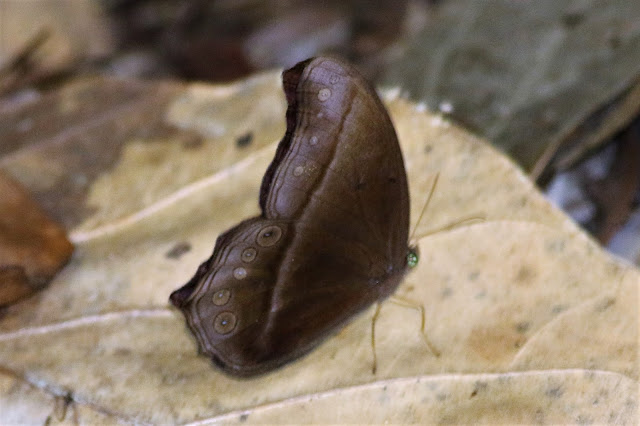Here are a few butterflies' photo which were taken around KL and Selangor regions. Most of them were common though.
A Common Posy looking at its own "avatar".
Yamfly is still around on its favourite perch.
I didn't see any tigers or elephants but I did saw a "Small Leopard" (Phalanta alcippe alcesta)
It's a rather small size butterfly in real life.
Chocolate Demon (Ancistroides nigrita maura) is probably one of the most common 'bobs' you can find in this region.
A Rustic resting almost at the edge of an overhanging leave.
Tufted Jungle King (Thauria aliris pseudaliris)
This is a denizen of deep forest. It came out in the open area at the edge of a forest trail.
Despite its unpleasant looking condition, it was still satisfying to see this uncommon butterfly in the open. Unlike a "cicak" where it can grow back its tail, a butterfly can't regrow its wings once tattered.
Grey Pansy (Junonia atlites atlites)
You will need to move very slowly if you want to get really close to this butterfly.
Arhopala democritus lycaenaria - White-dotted Oakblue
Despite its status as a common forest butterfly, this is the first time I am seeing it.
My more experienced butterfly friend has helped me to identify the above species as a "Common Mime" (Papilio clytia clytia). It floats gently like a butterfly but it certainly doesn't stint like a bee.
Neptis magadha charon
Common name: Spotted Sailor
Status: rare
I have differentiated it from "Neptis d. nesia" from the row of its forewing spots.
Royal Assyrian (Terinos terpander robertsia)
These are not really sharp photos as it was foraging under some thick jungle but I am just as thrilled to be able to capture its purple streak.
An uncommon forest butterfly which name sounds like a fishing lure brand and it looks a bit like the common yellow grass.
Lastly I have always wanted to know the wing profile of a skipper. They have the unique ability to fold up their wings like a fighter jet.
With the help from a more experience butterfly researcher, here are his description of the wing profile of what I think could be a "Potanthus ganda ganda" (which is reported to be more common in the forested areas):
(1) & (2) are the forewings but (1) is upperside right forewing, (2) is underside left forewing; (3) is upperside left hindwing.
HAVE FUN WITH BUTTERFLIES !!

























































